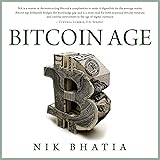The global financial landscape is currently undergoing a seismic shift, with profound implications for investors. As explored in the video above featuring insights from Raoul Pal, the world economy is grappling with an unprecedented level of debt, a situation that is increasingly seen as unsustainable. This predicament, it is argued, points toward an inevitable path: the debasement of fiat currencies, which is poised to drive a monumental acceleration in assets like Bitcoin and Ethereum. This analysis delves deeper into the core arguments presented, examining why this cycle is anticipated to be a “2017 on steroids” for the crypto market, driven by a singular dominant factor: liquidity.
The Unavoidable Path of Debasement
The fundamental issue confronting the global economy is its overwhelming debt burden, estimated at an astounding 400% of global GDP. Governments worldwide find themselves in a precarious position where the interest payments on this colossal debt are surpassing the rate of economic growth. This widening gap suggests that traditional methods of debt reduction, such as stimulating growth or implementing austerity measures, are no longer viable solutions.
Central banks are also caught in a difficult bind. Tightening monetary policy by raising interest rates, a conventional approach to combating inflation, risks triggering a systemic collapse given the existing debt levels. Such a move would exacerbate the interest bill, making it even more impossible for governments to service their obligations. Thus, the system’s inability to withstand higher rates pushes policymakers towards a different, more familiar route.
Historically, when faced with such insurmountable debt, policymakers are presented with two primary options: a default or debasement. A default would entail a sudden, catastrophic write-down of savings, pensions, and assets, leading to immediate economic turmoil. Given the severe consequences, history indicates that debasement is almost always chosen. This involves slowly inflating away the debt by injecting more liquidity into the system, effectively reducing the purchasing power of the currency over time. This approach allows governments to manage their debt obligations without the immediate shock of a default, albeit at the cost of hidden inflation for the populace.
Understanding the One-Factor World: Liquidity Reigns Supreme
Since the 2008 financial crisis, a new metronome for the global economy has been established. This involves a recurring four-year cycle where governments refinance debt, central banks ease monetary policy, and liquidity levels are ramped up. Crucially, this liquidity is rarely fully withdrawn; instead, it ratchets higher, compounding at an approximate rate of 8% annually. This persistent expansion of liquidity represents the true debasement rate of fiat currency, a silent tax that erodes wealth. Once this underlying mechanism is recognized, its implications become unavoidable for investors.
In this “one-factor world,” where liquidity is the primary driver, traditional investment strategies are becoming increasingly ineffective. The long-held belief in broad diversification—owning a mix of stocks, bonds, gold, and real estate—is challenged. It is observed that once assets are adjusted for this ongoing debasement, many merely maintain their value or slightly outpace it, but fail to generate significant wealth. For instance, equities, while appearing strong in nominal terms, are found to flatten out when measured against global liquidity. Gold typically preserves value but does not offer compounding growth. Even real estate, often considered a robust investment, shows a flat trajectory when the effects of liquidity are stripped away.
The Failure of Traditional Diversification
Conventional portfolio theory emphasizes diversification as a means of risk management and return optimization across various asset classes. However, in an environment where nearly all assets are influenced by a single dominant force—global liquidity—this strategy can prove counterproductive. If liquidity acts as the tide, lifting or sinking all boats, then scattering investments across different classes might dilute potential gains rather than enhance them. The core models that have guided financial careers, such as discounted cash flows or value screens, are found to struggle in this regime because they assume market movements are driven by multiple independent variables like growth, profits, and interest rates. It is asserted that these variables now account for less than 10% of market movements, with liquidity being the overwhelming explanatory factor.
The Emergence of Concentrated Portfolios
Given that a singular factor, liquidity, explains a significant portion of market movements—reportedly 97% for the NASDAQ and 90% for crypto assets—a different approach to portfolio construction is emerging. Rather than diversification, concentration in assets highly leveraged to liquidity expansion is proposed as the more rational strategy. These assets do not just outperform; they accelerate. Tech stocks and, most notably, crypto assets like Bitcoin are identified as the beneficiaries of this dynamic. Tech stocks represent innovation, while crypto embodies monetary innovation, offering the purest expression of liquidity expansion. When the tide of liquidity rises, these specific assets are observed to surge vertically, offering substantial compounding of actual purchasing power.
Why This Crypto Cycle is “2017 on Steroids”
The current market setup is frequently compared to the 2017 crypto bull run, a period when Bitcoin famously experienced a 23X surge from its January lows to its December peak. However, it is believed that the upcoming cycle will be significantly more powerful, earning the moniker “2017 on steroids.” Several key differences contribute to this heightened potential.
Expanded Liquidity Architecture
Unlike 2017, where liquidity flow primarily originated from central banks, the current architecture is far more expansive and permanent. Liquidity is now surging through a broader array of channels, including substantial fiscal deficits, the balance sheets of private banks, shadow banking systems, and, increasingly, stablecoins serving as conduits for capital. This multi-faceted and entrenched system of liquidity generation suggests a more robust and sustained flow of capital into the market, providing a stronger foundation for asset appreciation.
Enhanced Adoption Rails
Another significant shift lies in the accessibility and institutional acceptance of digital assets. In 2017, participation in the crypto market often required navigating complex processes, such as setting up Coinbase accounts and managing cold wallets. For the upcoming cycle, the landscape is dramatically different. Institutional adoption rails, including Bitcoin ETFs offered by major financial players like Fidelity and Schwab, are making crypto a default allocation option rather than a niche, speculative play. This ease of access and mainstream integration is expected to onboard a far larger wave of capital, transforming Bitcoin into a “gateway drug” that can lead investors towards other digital assets.
Extended Macro Patience
The core global economy has been observed to operate below its potential for an extended period. When the economy eventually lifts from this state, the business cycle’s extension could propel this rally further than historical patterns might suggest. This macro patience implies that the underlying economic conditions could support a prolonged period of asset appreciation, amplifying the effects of liquidity expansion and institutional adoption on the crypto market. The sequence of events is anticipated to follow a pattern: financial conditions loosen, global M2 liquidity rises, markets recover, and finally, the ISM (Institute for Supply Management) index confirms the economic upswing, signaling the “banana zone” for risk assets, including crypto.
Navigating the Market: A Roadmap for the Future
The roadmap for this accelerated cycle suggests a progression where the ISM index, once above 50 and moving towards 55-60, historically correlates with significant moves in risk assets and the onset of “alt season.” This period is when substantial gains are typically realized across the broader crypto universe, beyond just Bitcoin.
In this environment, preparedness is paramount. Parabolas, by their nature, do not announce themselves; they build quietly before price charts go vertical. Waiting for the acceleration to become unequivocally obvious means missing the majority of the move. Therefore, acting rationally amidst an anticipated surge of greed and fear requires proactive measures. It is advised that investors establish clear allocation bands, determine how much capital will be held through periods of high volatility, and critically, define profit-taking rules *before* the mania truly begins. Such preparation is considered essential for maintaining a rational approach when the market’s velocity inevitably increases.
The message remains clear: in this liquidity-driven regime, only tech and crypto assets are consistently gaining purchasing power, while other assets struggle to keep pace with debasement. If the trend of rising global liquidity persists into the next year, it is believed that Bitcoin will not merely rise but will experience a super acceleration, potentially moving faster, harder, and further than many currently deem possible, akin to the “2017 on steroids” crypto cycle discussed above.







